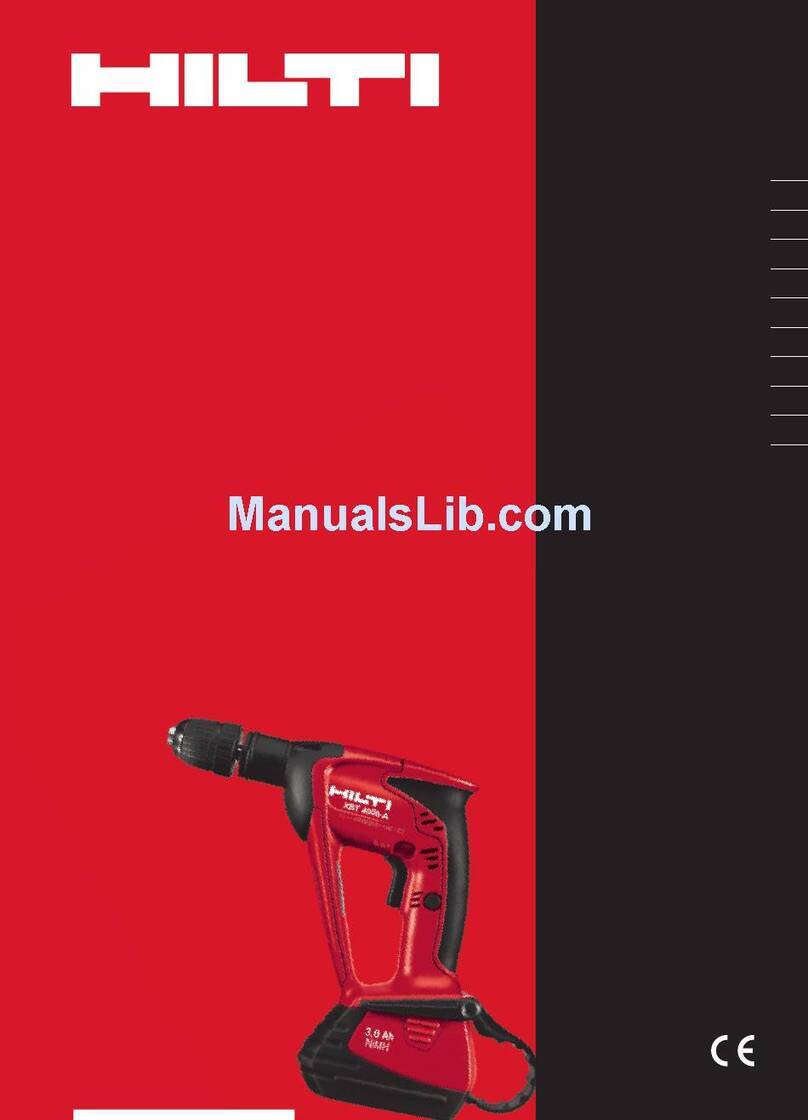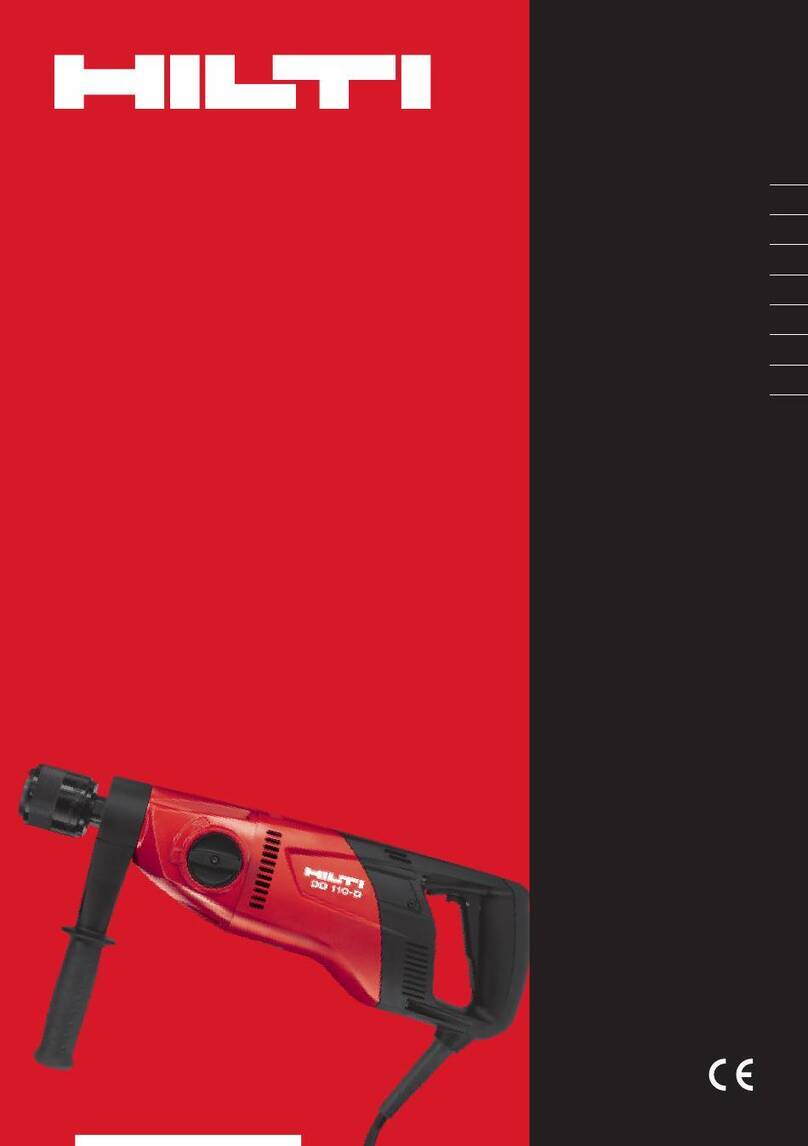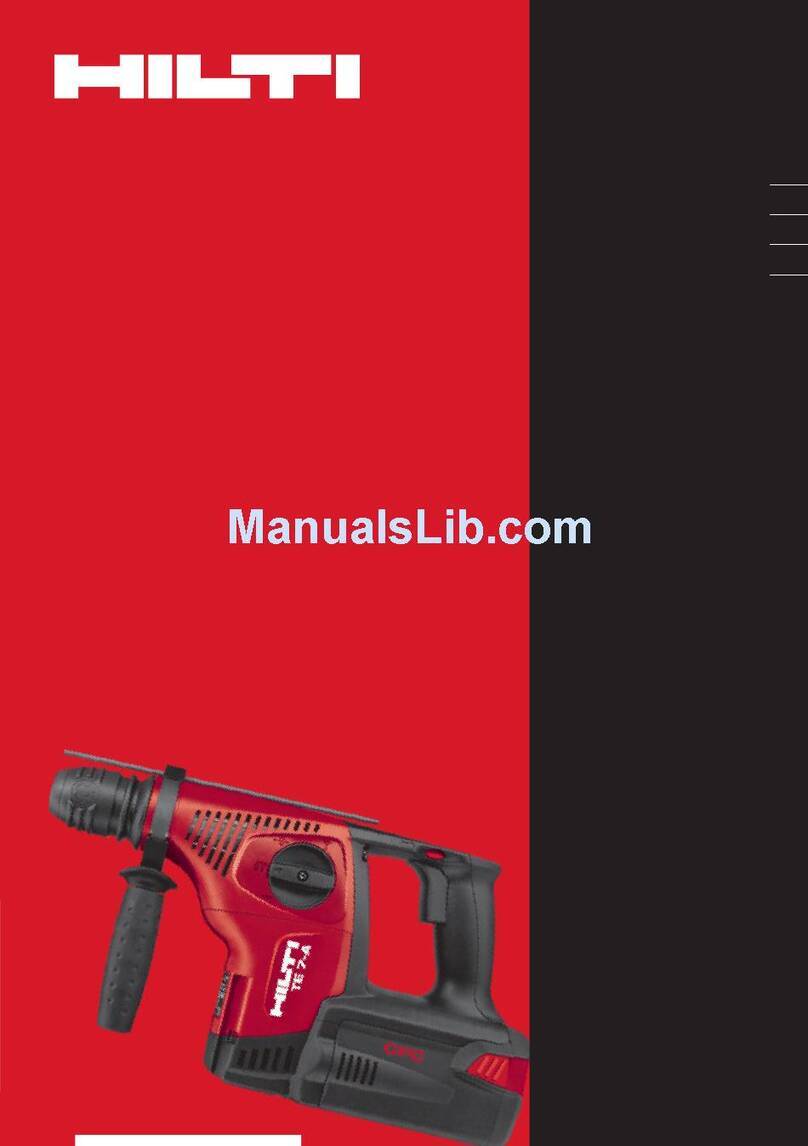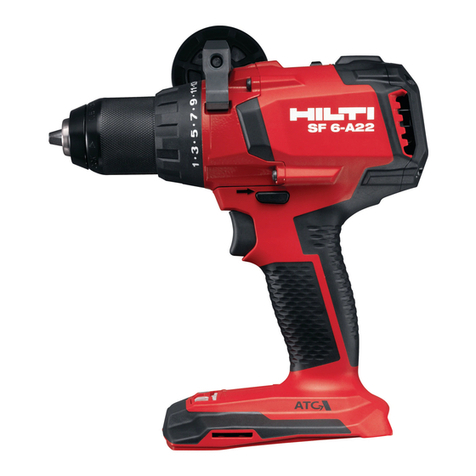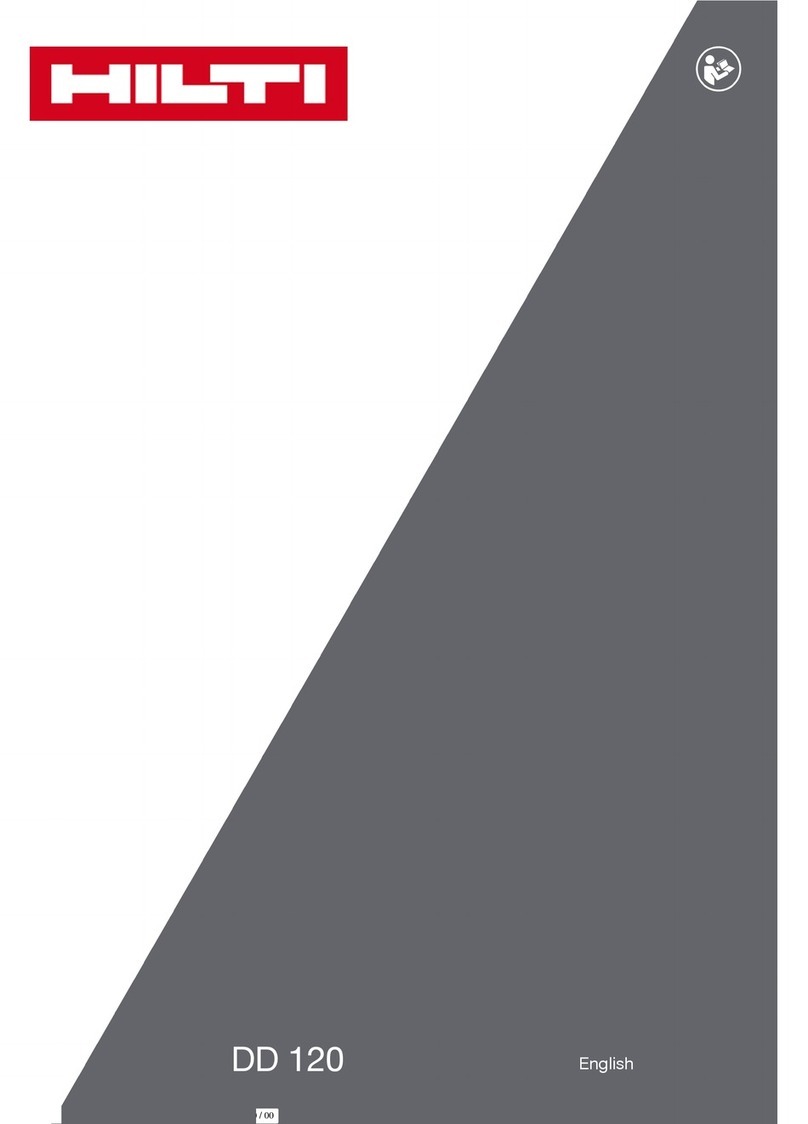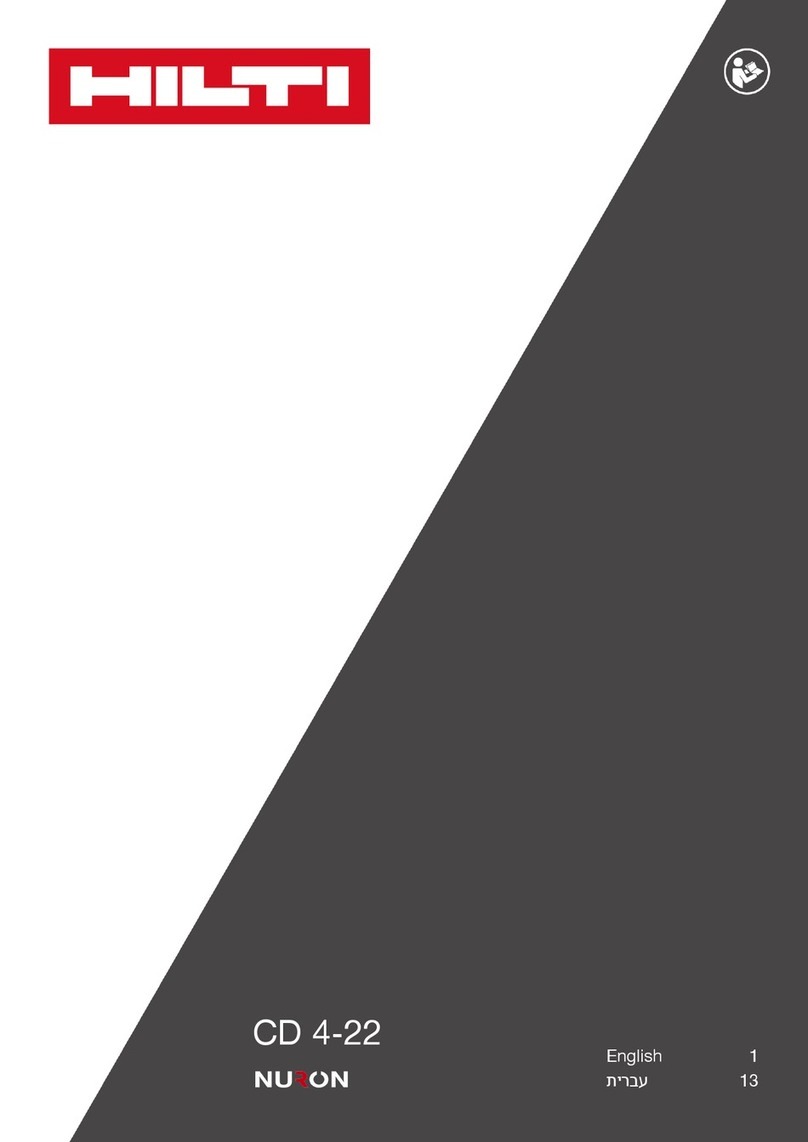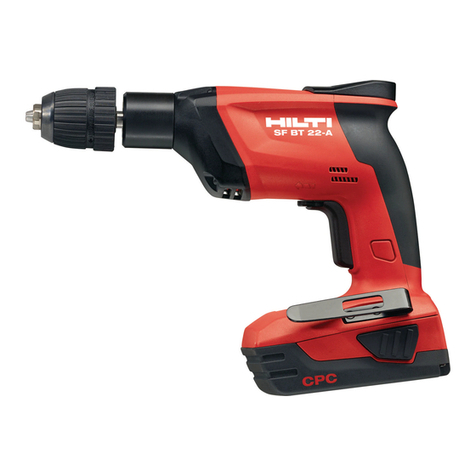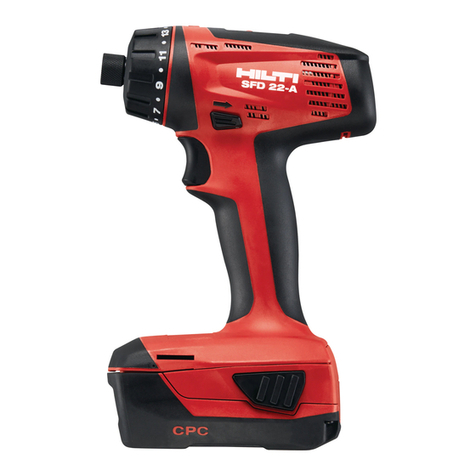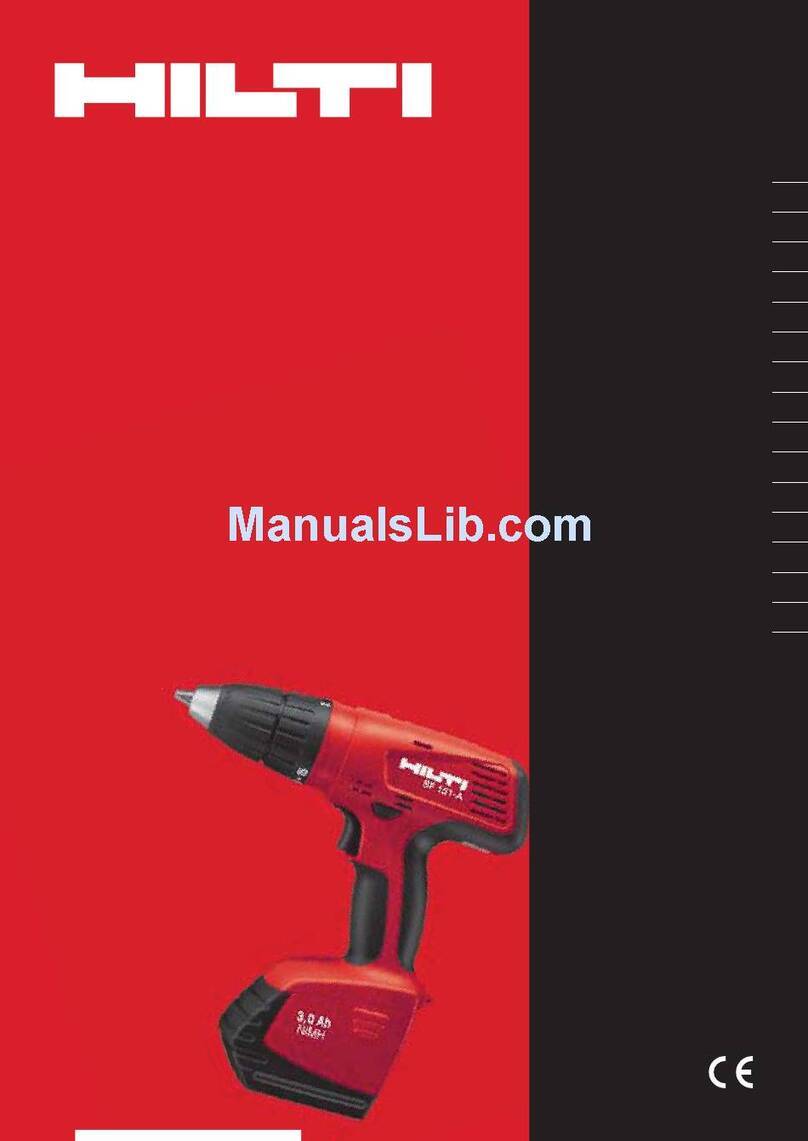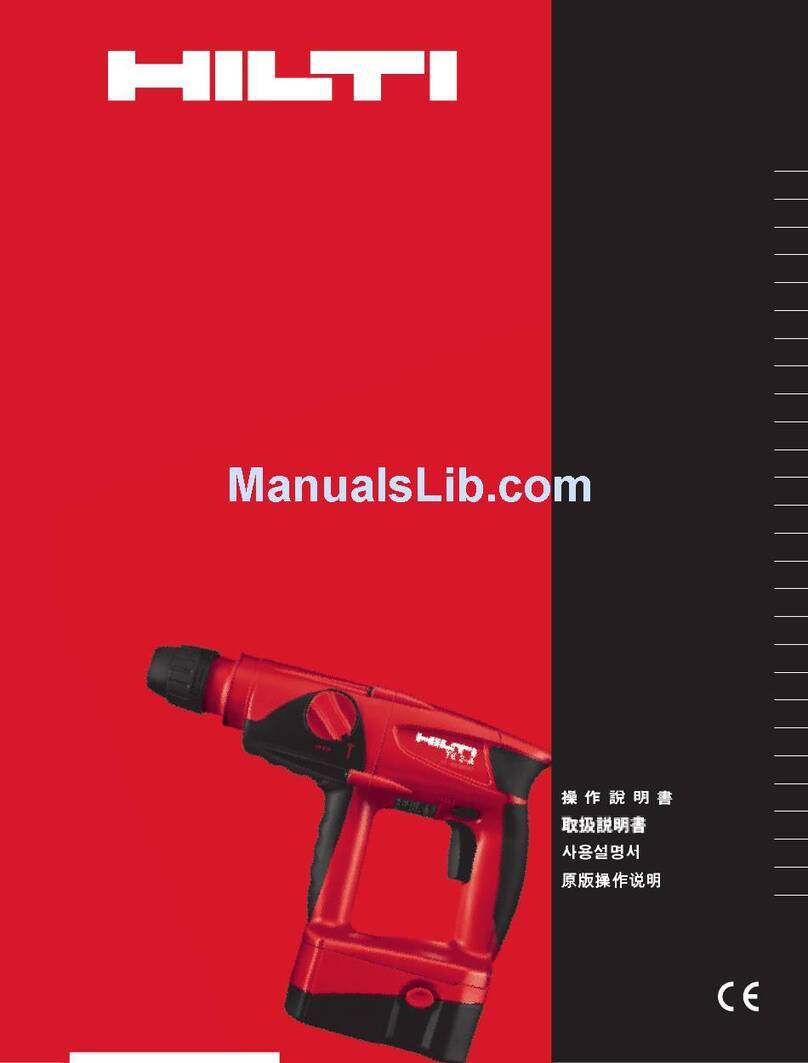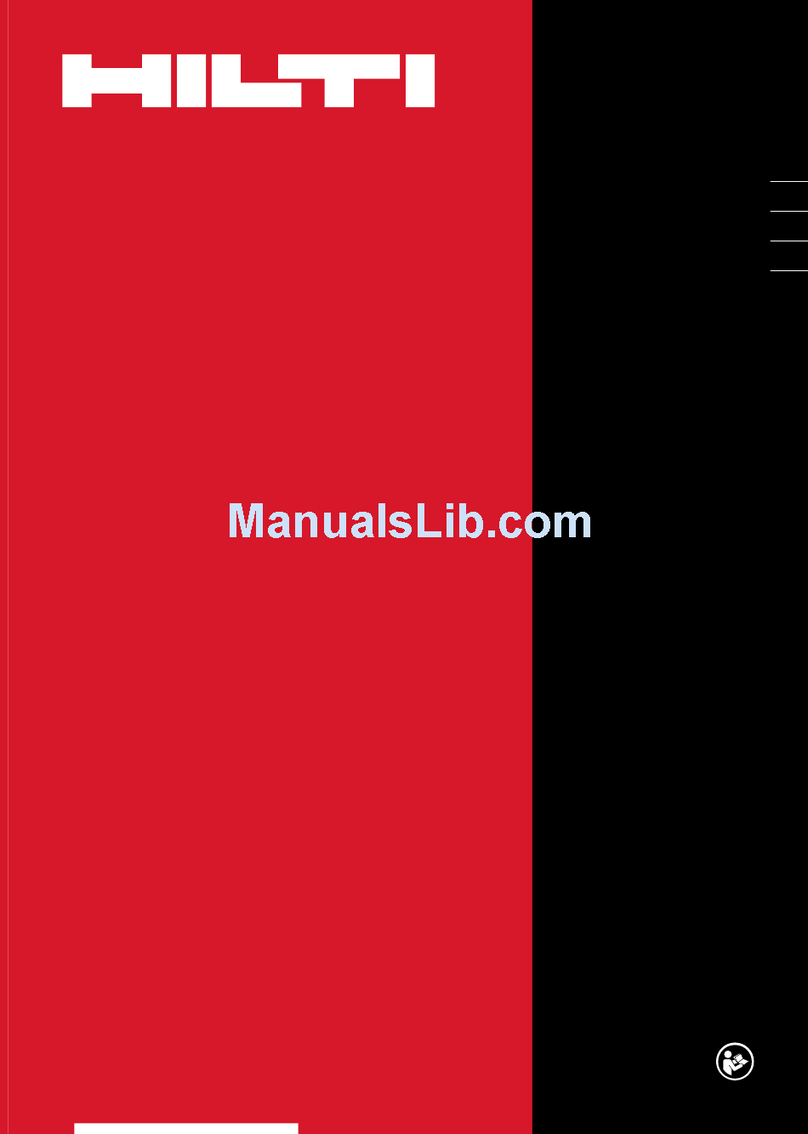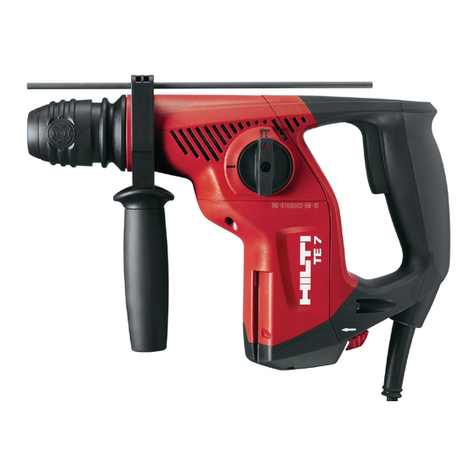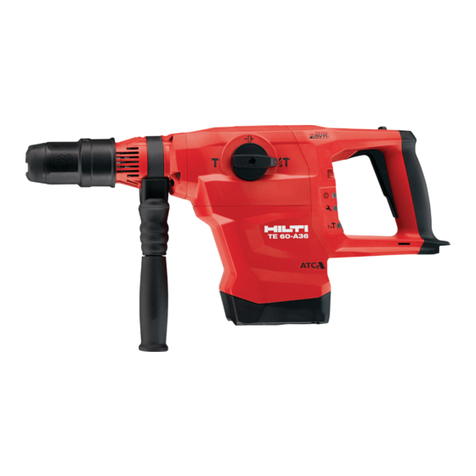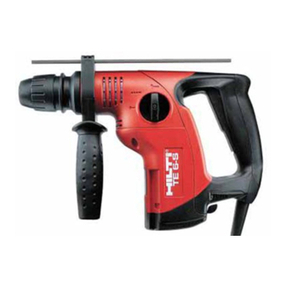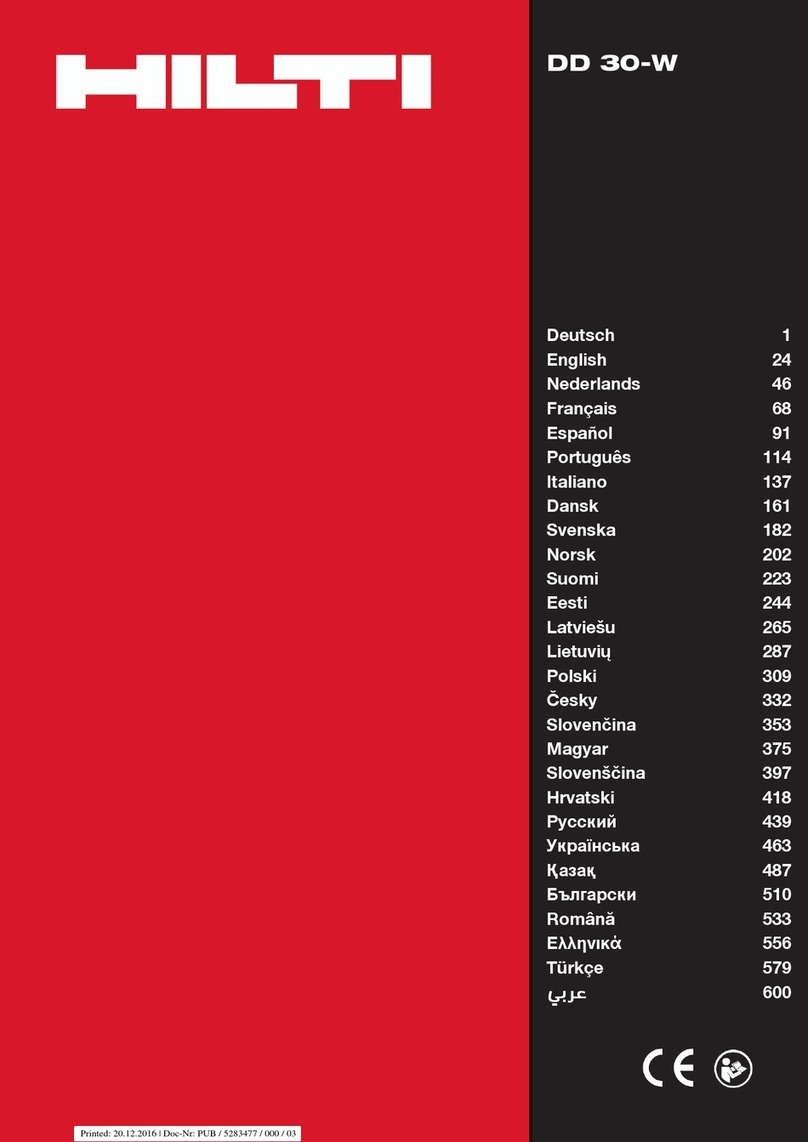23
en
2. Description
2.1 Use of the equipment as intended
The DD 350 or DD 500, with the DD HD-30 drill stand,
form drilling rigs designed for wet core drilling in min-
eral materials using diamond core bits (hand-held use
is not permissible).
The drive unit must always be mounted on the drill stand
when in use and the drill stand secured adequately by
means of an anchor, vacuum base plate or quick-release
brace.
Manipulation or modification of the machine, drill stand
or accessories is not permissible. To avoid the risk of
injury, use only genuine Hilti accessories and insert tools.
Observe the information printed in the operating instruc-
tions concerning operation, care and maintenance.
Observe the safety precautions and operating instruc-
tions for the accessories used.
Do not strike the base plate with a hammer or other heavy
object when making adjustments to it.
The machine, drill stand, accessories and insert tools
may present hazards when used incorrectly by untrained
personnel or not as directed.
The machine may be operated only when connected to
an adequately rated electric supply equipped with an
earth/ground conductor.
DD 350
Equipment
System with water collector
System without water collector
Core bit diameters
50–250 mm
50–500 mm
Drilling direction
All directions
All directions
The machines are designed and built in accordance with
IP55 and are thus resistant to sprayed water. This allows
drilling to be carried out in all directions without use of
a wet-type industrial vacuum cleaner.
The machines may be operated only when connected to
an adequate cooling water supply (at least 0.5 l/min. at
max. 30 °C water temperature).
If the drill stand column is extended to a length of 2 meters
or longer, an additional means of support, e.g. the brac-
ing spindle (item no. 305940) must be used.
Horizontal drilling in conjunction with the vacuum base
plate (accessory) is permissible only when an additional
means of securing the drill stand is employed.
Drilling into materials hazardous to the health (e.g.
asbestos) is not permissible.
2.2 Items supplied
DD 350 or DD 500 diamond drilling machine
Operating instructions
DD 500
Equipment
System with water collector
System without water collector
Core bit diameters
82–250 mm
82–600 mm
Drilling direction
All directions
All directions
